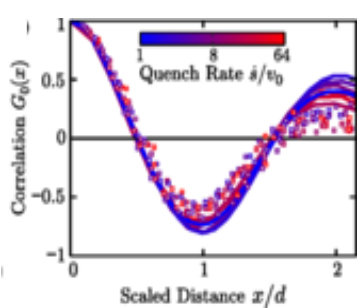A Bose-Einstein condensate, when shaken appropriately, shows universal dynamics at a ferromagnetic quantum critical point.
By ramping the modulation strength, the emergence and growth of the pseudo-spin fluctuations are universal in the normalized coordinate (bottom graphic, squares), and are in good agreement with theoretical calculations (bottom graph. Line). 
We expect this result is generalizable to a large class of quantum critical dynamics in the same universality class.

